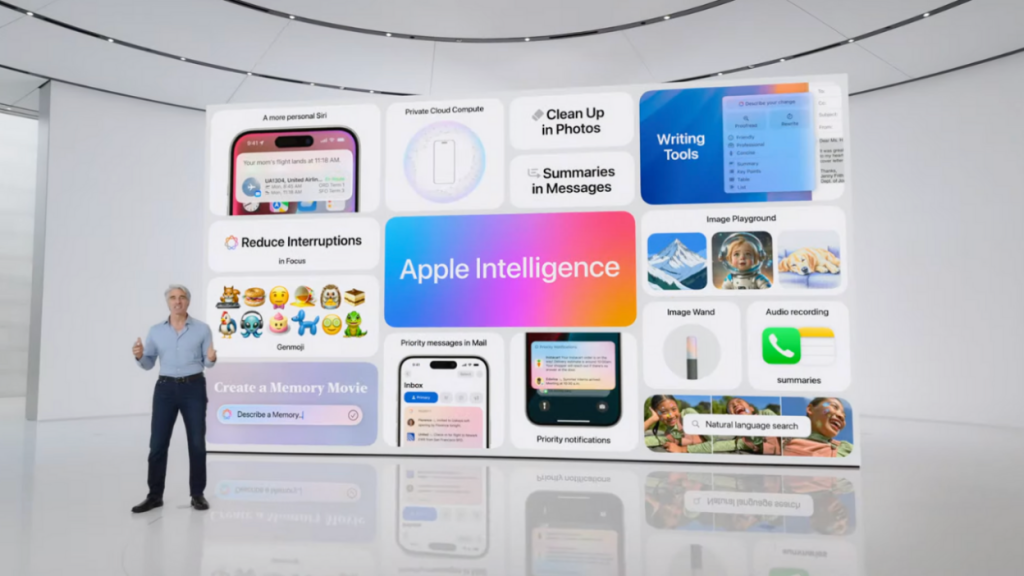The Evolution of Apple Intelligence
Initially, Apple Intelligence will be free, but the long-term vision is to introduce a subscription model called “Apple Intelligence+.” This premium tier would offer extra features, accessible through monthly fees, enhancing the user experience beyond the standard offerings.
Apple’s strategy to monetize its AI capabilities comes as the company seeks to diversify its revenue streams. By integrating advanced AI features into its ecosystem, Apple aims to entice users to subscribe to these services, thereby reducing its reliance on hardware sales.
AI Partnerships and Integration
Apple is expected to collaborate with major AI players like OpenAI, Google, and Anthropic. These partnerships will enable Apple to offer AI services such as ChatGPT directly through its devices. Notably, Apple has declined a potential partnership with Meta, citing privacy concerns.
The integration of AI services is set to debut with the release of iOS 18, iPadOS 18, and macOS Sequoia this fall. Users can expect features like an upgraded Siri, enhanced notification prioritization, and sophisticated writing tools. These enhancements are designed to leverage the latest advancements in AI, providing a more intuitive and seamless user experience.
Apple’s commitment to prolonging the lifespan of its devices has led to a slower pace of hardware upgrades. This shift emphasizes the importance of software and AI in driving the company’s business. Devices from as far back as 2017 can still run the latest operating systems, demonstrating Apple’s focus on durability and longevity.
However, this trend has also resulted in fewer hardware-driven upgrades, making it critical for Apple to find new sources of revenue. The introduction of AI services as a paid subscription is a strategic move to address this challenge. By offering advanced AI capabilities, Apple hopes to encourage users to invest in newer devices that can support these features.
AI in Vision Pro and Other Devices
Apple Intelligence is also expected to be integrated into the Vision Pro headset, although this may not happen until 2025. The headset’s robust hardware makes it an ideal candidate for AI features, including advanced chatbot capabilities and new productivity tools. This integration underscores Apple’s commitment to expanding its AI ecosystem across various devices.

Moreover, Apple is reportedly working on an entirely new robotic device with a display, which will feature Apple Intelligence at its core. This move aligns with the company’s vision of creating a comprehensive AI-driven environment, catering to diverse user needs.
Revenue Generation From a Subscription AI Model
Apple’s AI strategy is not just about enhancing user experience; it’s also a significant revenue generation opportunity. The company plans to take a cut of subscription revenues from AI partners, adding another layer to its financial model. This approach positions Apple to benefit from the growing demand for AI services, ensuring sustained revenue growth.
The ‘potential’ launch of “Apple Intelligence+” as a subscription service is expected to be part of the Apple One bundle, making it an attractive option for users already invested in the Apple ecosystem. Frequent updates to Apple Intelligence could further enhance its appeal, making it a crucial component of Apple’s subscription services.
Apple’s move to monetize its AI capabilities through a paid subscription model reflects its strategic pivot towards services and software. As hardware innovation slows, the importance of AI and software in driving Apple’s business cannot be overstated. By offering advanced AI features and forging strategic partnerships, Apple is well-positioned to lead the AI revolution while securing a steady stream of revenue.
As Apple Intelligence evolves, users can look forward to a richer, more integrated experience, underscoring the company’s commitment to innovation and excellence in the realm of AI.


